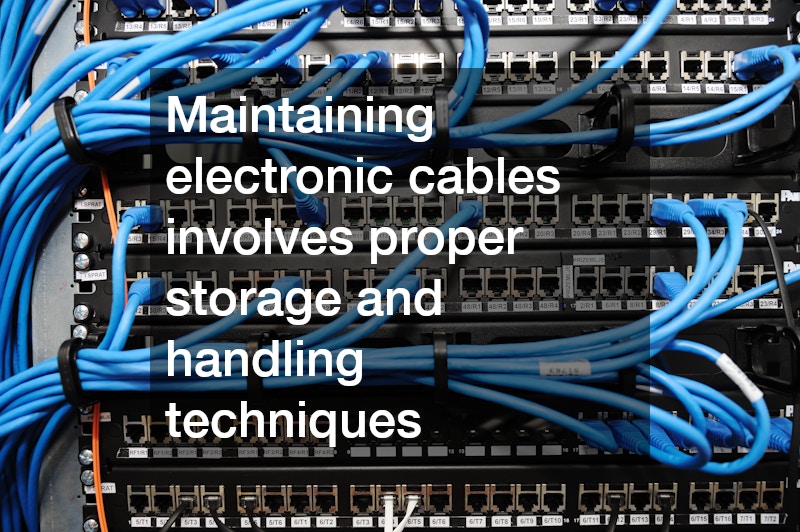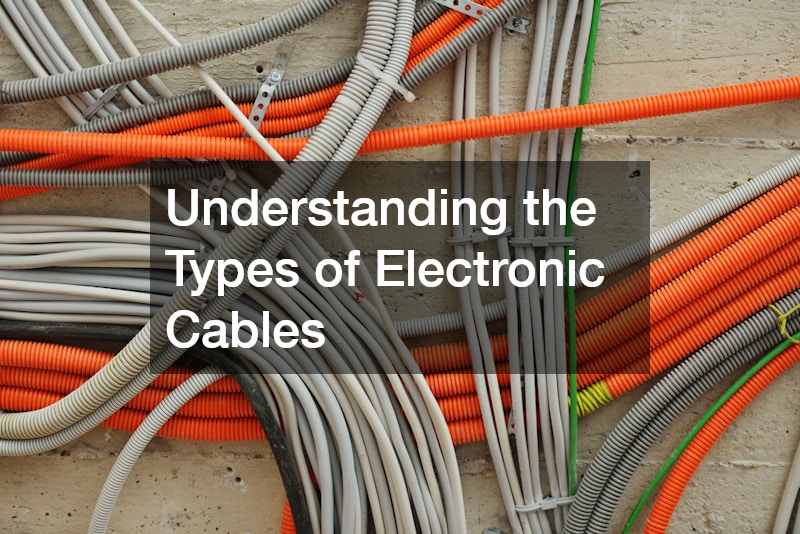
This article aims to explore various types of electronic cables, explaining their uses and how they contribute to the functionality of electronic devices. As technology evolves, understanding the different types of cables becomes increasingly important for both professionals and consumers. With electronic devices becoming an integral part of daily life, knowing the right cable to use can enhance device performance and connectivity.
1. What are the Different Types of Electronic Cables?
HDMI (High-Definition Multimedia Interface) cables are essential for modern home entertainment systems. They are primarily used to transmit high-definition audio and video signals between devices such as televisions, projectors, Blu-ray players, and gaming consoles. HDMI cables have transformed how we experience audio-visual media by enabling easy and efficient transmission of data, ensuring high-quality viewing experiences.
The technology behind HDMI cables allows them to support up to 4K resolution, catering to the needs of increasingly advanced display technologies. With the introduction of HDMI 2.1, these cables now support even higher resolutions and frame rates, making them future-proof for upcoming advancements. Due to their versatility and robust performance, HDMI cables have become a staple in both home setups and professional environments.
Not only do HDMI cables support high-definition video, but they also transmit multiple audio channels, providing surround sound capabilities. This eliminates the need for multiple cables, simplifying the setup process and reducing cable clutter. As a result, HDMI has become the industry standard for connecting a wide range of electronic devices, enhancing both audio and video quality through a single cable.
USB (Universal Serial Bus) cables are among the most commonly used electronic cables today. Available in several versions, including USB-A, USB-B, USB-C, and mini/micro USB, these cables facilitate data transfer and charging functions. They connect a multitude of devices, such as smartphones, computers, digital cameras, and peripheral devices like printers and external hard drives.
The evolution of USB cables from USB 1.0 to USB 4.0 shows significant advancements in performance and speed. USB-C, in particular, has gained popularity due to its reversible design, faster data transfer rates, and ability to deliver more power for charging devices. These improvements have made USB cables indispensable for personal and professional use, streamlining connectivity across various gadgets.
One of the key benefits of USB cables is their universal compatibility, allowing seamless connections between devices from different manufacturers. This interoperability reduces the need for multiple proprietary cables, making USB a preferred choice among consumers. With continual upgrades and widespread adoption, USB cables remain at the forefront of electronic connectivity solutions.
2. How to Choose the Right Cable for Your Needs?
When choosing electronic cables, it’s essential to understand their specifications, as these determine their performance and suitability. Specifications such as bandwidth, signal attenuation, and conductor material affect how well a cable can transmit data. Additionally, the cable length should be considered, as longer cables may experience signal loss, impacting the overall performance.
Standard certifications, such as HDMI and USB standards, ensure that cables meet specific criteria and perform reliably. These certifications guarantee compatibility with a wide range of devices, providing users with peace of mind. By understanding and evaluating cable specifications, consumers can make informed decisions that match their unique requirements.
Another crucial aspect of cable specifications is the insulation and shielding used to protect against electromagnetic interference (EMI). Proper shielding ensures that data is transmitted without interference from other electronic devices. Investing time in understanding these technical details can greatly enhance the functionality and reliability of connected devices.
One of the most vital factors to consider when selecting electronic cables is ensuring compatibility with the intended devices. Checking the cable’s connector type is a fundamental step, as mismatched connectors can render a cable useless. Devices such as smartphones and laptops may have specific requirements, particularly regarding power delivery and data transfer rates.
3. What Maintenance and Safety Practices Should Be Followed?
Maintaining electronic cables involves proper storage and handling techniques to ensure longevity and reliability. Cables should be stored in organized and designated areas to prevent tangling, kinking, and physical stress. Using cable management tools, such as ties or sleeves, can help keep cables tidy while minimizing wear and tear.
Cables should also be protected from extreme temperatures and moisture, which can degrade materials and affect performance. Storing them in cool, dry places can mitigate potential damage from environmental elements. Additionally, handling cables gently and avoiding unnecessary bending or pulling can prevent internal damage and maintain optimal performance.
For frequently used cables, creating a routine maintenance schedule can aid in detecting early signs of wear. Regular inspection allows users to address minor issues before they escalate into significant problems. Adopting these practices ensures cable efficiency and extends its useful lifespan, reducing the likelihood of unexpected failures.
Cable damage can result from various factors, including physical stress, environmental exposure, and electrical interference. Identifying common signs of damage, such as fraying, exposed wires, or decreased performance, enables timely intervention. Regular inspection and testing can identify potential issues before they result in failures or data loss.
This article has provided an overview of the various types of electronic cables, guidance on selecting the right ones for specific needs, and best practices for maintenance and safety. Understanding these aspects can help in making informed decisions, optimizing device performance, and ensuring safety. By staying informed about evolving cable technologies and maintenance practices, both professionals and consumers can enhance their connectivity experience and prolong the life of their electronic gadgets.




